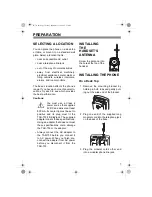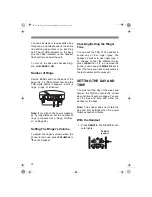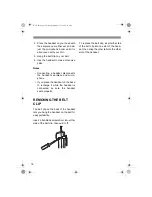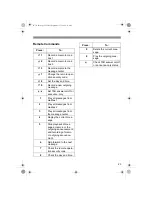
17
Entering a Pause
In some telephone systems, you must
dial an access code (9, for example) and
wait for a second dial tone before you
can dial an outside number. You can
store the access code with the phone
number. However, you should also store
a pause after the access code to allow
the outside line time to connect. To do
so, press
REDIAL
to enter a 2-second
pause after entering the access code.
For a longer pause, press
REDIAL
again.
Dialing a Stored Number
To dial a stored number, lift the handset
and press
TALK
. When you hear the dial
tone, press
MEM
, then enter the memory
location number (
01
–
20)
for the stored
number.
Chain-Dialing Service Numbers
For quick recall of numbers for special
services (such as alternate long dis-
tance or bank by phone), store each
group of numbers in its own memory lo-
cation.
When calling special services, dial the
service’s main number first. Then, at the
appropriate place in the call, press
MEM
,
then enter the memory location number
for the additional stored numbers.
Testing Stored Emergency
Numbers
If you store an emergency service’s
number (police department, fire depart-
ment, ambulance) and you choose to
test the stored number, make the test
call during the late evening or early
morning hours to avoid peak demand
periods. Also, remain on the line to ex-
plain the reason for your call.
USING AN OPTIONAL
HEADSET
Your TAD-733’s handset is equipped
with a headset jack on top. This jack al-
lows you to connect a headset (not sup-
plied) for handsfree conversation. The
belt clip on the back of the handset lets
you carry the handset everywhere. A va-
riety of headsets are available at your lo-
cal RadioShack store.
Follow these steps to use a headset.
1. Insert the headset’s
3
/
32
inch (2.5
mm) plug into the jack on the top
of the handset.
43-733.fm Page 17 Friday, September 17, 1999 8:57 AM















































